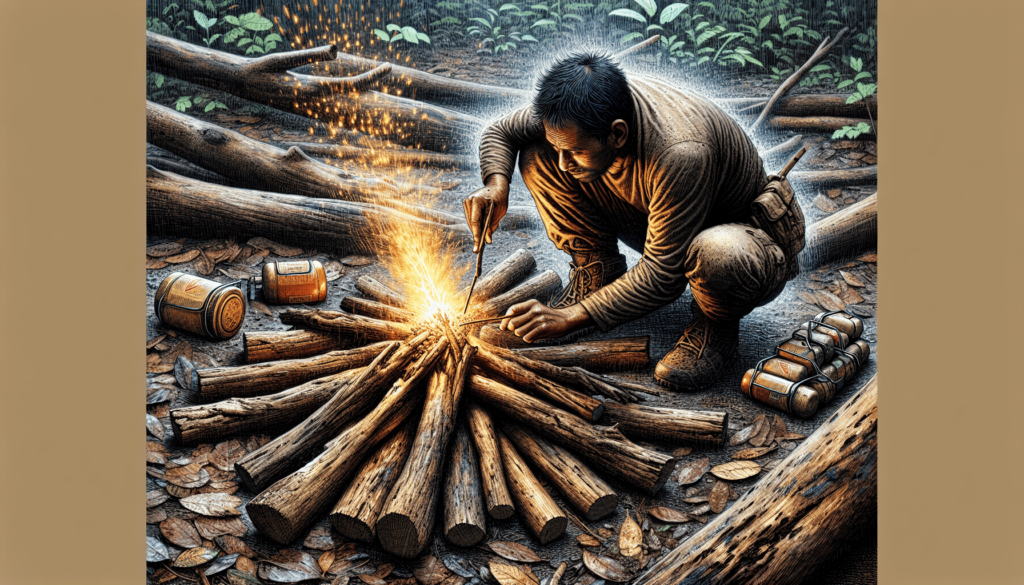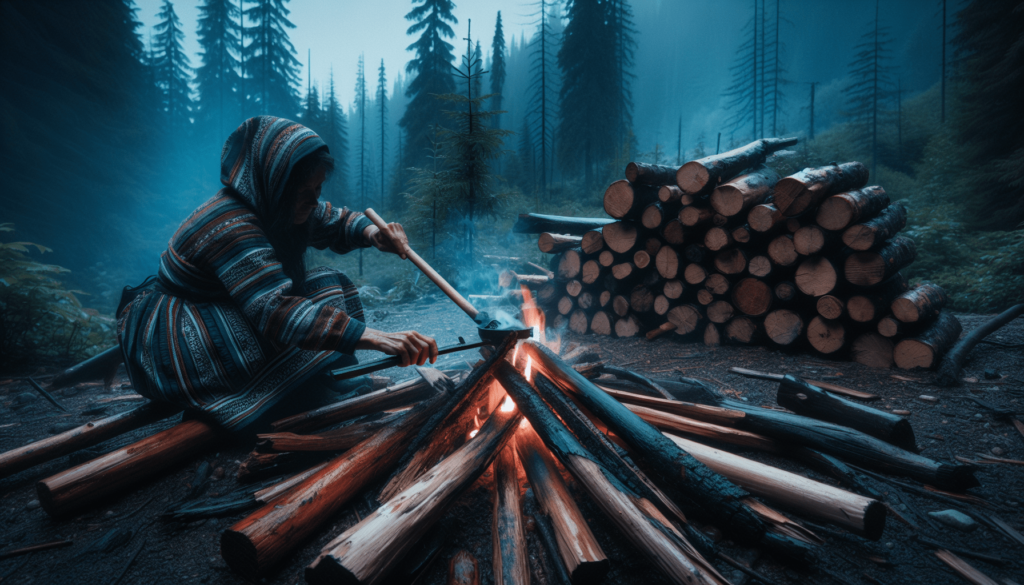Imagine embarking on a self-sufficient adventure, living off the grid with your family. Your backyard transforms into a thriving survival garden, teeming with fresh produce. Disaster preparedness empowers you to care for your pets during emergencies, while DIY projects like building a homemade water filter ensure self-reliance. Even the younger explorers get involved, mastering basic survival skills like making fire without matches. This journey into off-grid living isn’t about preparing for doomsday; it’s about embracing self-reliance, connecting with nature, and empowering yourself and your loved ones with valuable skills. So, are you ready to embark on your own off-grid adventure?

Introduction
Fire is essential when it comes to off-grid living. It provides warmth, a means to cook food, and a sense of security. In this article, we will explore the diverse topics of self-sufficiency and delve into the importance of fire in this lifestyle. By embracing self-reliance and connecting with nature, you can truly experience the rewards of off-grid living.
Understanding the Challenges
Starting a fire in damp conditions can be a real challenge. One of the biggest obstacles is wet wood, which can make it difficult to get a fire going. Wet wood doesn’t ignite easily and can produce a lot of smoke. Additionally, conventional fire-starting methods like matches or lighters may not work effectively in these conditions. It’s important to understand these challenges in order to overcome them successfully.
The Hack: Creating a Firestarter Kit
To overcome the challenges of starting a fire in damp conditions, it’s crucial to have a well-equipped firestarter kit. This kit should contain essential items such as waterproof matches or a reliable lighter, as well as a backup ignition source like a ferrocerium rod or firesteel. Choosing the right firestarter materials, such as dryer lint or cotton balls soaked in petroleum jelly, can significantly increase your chances of starting a fire. Other useful tools to include in your kit might be a small saw or hatchet for collecting firewood, a fire poker to manage the fire, and a fire extinguisher for safety purposes.
Preparing Wet Wood for Burning
Identifying wet wood is the first step in preparing it for burning. Wet wood is often darker in color and feels moist to the touch. To effectively dry wet wood, it’s important to start with small pieces and gradually increase the size as the fire grows stronger. You can also utilize alternative firewood options in damp environments, such as pine needles or birch bark, which ignite more easily.

Building the Fire Structure
Choosing the right location for your fire is crucial. It should be in an open area away from any structures or flammable materials. Creating a fire pit or ring can help contain the fire and prevent it from spreading. When building the fire structure itself, start with a base of small twigs and gradually add larger pieces of wood. This allows for proper airflow and ensures that the fire burns efficiently.
Using the Firestarter Kit
Using your firestarter kit is a step-by-step process. Begin by gathering your firewood and arranging it in the fire pit. Use your ignition source, whether it be matches or a lighter, to ignite the firestarter material. Once the fire starts, carefully add more kindling and firewood to keep it burning. It’s important to be patient and allow the fire to build gradually, rather than adding too much fuel all at once.
Maintaining and Controlling the Fire
Managing the fire’s intensity and heat is crucial for a successful fire-starting process. By adding fuel in small increments, you can maintain a steady flame without suffocating it. It’s also important to monitor the fire and prevent it from getting out of control. Keep a safe distance from the fire, use a fire poker to rearrange the wood if necessary, and ensure that there are no flammable materials nearby. Practicing fire safety is essential to prevent accidents and ensure a responsible fire-use experience.
Alternative Fire-starting Methods
While a firestarter kit is reliable, it’s always good to have alternative fire-starting techniques in your repertoire. Chemical fire starters, such as fire sticks or fire gels, can be useful in difficult conditions. Mechanical devices or tools like fire pistons or solar lighters can also provide alternative methods for starting a fire. It’s important to familiarize yourself with these techniques and have the necessary tools on hand in case of emergencies.
Fire Safety and Environmental Impact
Fires can be dangerous if not used responsibly. It’s important to understand the potential risks and dangers associated with fire. Implementing safety precautions, such as keeping a fire extinguisher nearby and never leaving a fire unattended, can minimize the risk of accidents. Additionally, wildfires can have a significant environmental impact. By following fire safety guidelines and using fire responsibly, you can help prevent wildfires and protect the environment.
Conclusion
Fire is an essential aspect of off-grid living. By mastering the art of fire-starting, you can ensure warmth, security, and the ability to cook food even in challenging conditions. The journey towards self-sufficiency is filled with valuable skills and experiences that connect us with nature and empower us to thrive. So, embrace the importance of fire, build your firestarter kit, and continue on your path towards self-reliance. With each new lesson learned, you’ll be better equipped to conquer the elements and live a fulfilling off-grid lifestyle.

